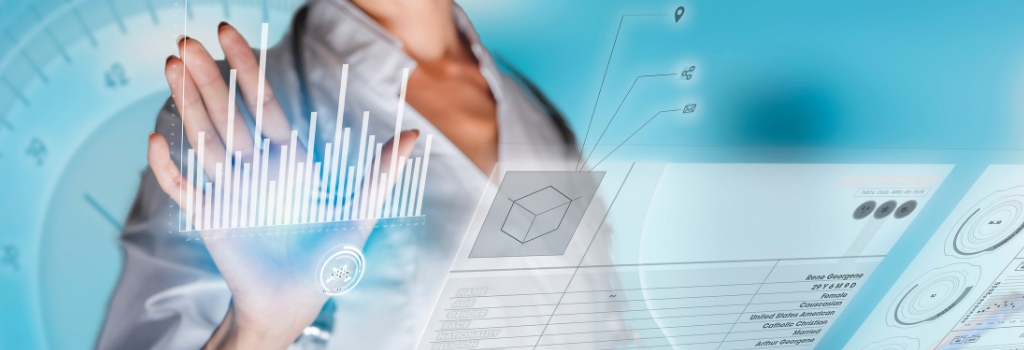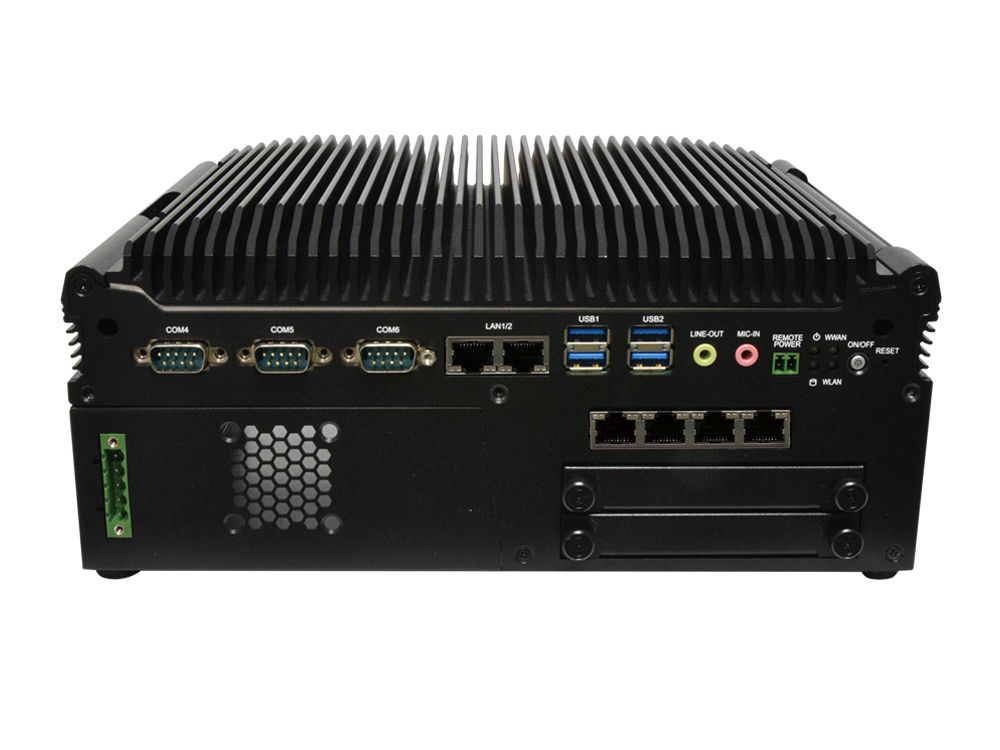But, the healthcare industry is beginning to get overwhelmed with the vast diversity in the health IoT ecosystem. The wide range of different IoT devices with different demands and generating extensive data can compromise any standard IT infrastructure. The healthcare industry needs the correct type of infrastructure to fulfill such demands. An IoT gateway is a crucial component for the success of a remote health monitoring system and application.
Table of Contents.
- Why IoT for Remote Health Monitoring?
- The Challenges of IoT in Remote Health Monitoring
- The IoT-Network Architecture for Remote Health Monitoring:
- The IoT endpoints.
- The IoT gateway.
- The cloud data center or high-end server.
- The IoT Gateway for Remote Health Monitoring.
-
How an IoT Gateway Benefits The Healthcare Infrastructure.
1. Why IoT for Remote Health Monitoring?
Physicians, patients, and the entire healthcare industry can benefit from IoT.
-
Patients: At home, patients may use wearables such as blood pressure or heart rate monitors so that doctors or healthcare facilities can remotely track their vital health conditions. This remote monitoring solution is especially beneficial for the elderly or sensitive patients living alone.
-
Physicians may also IoT to feed data into their monitoring apps and proactively track how a patient responds to a new treatment or reactively attend to a patient's immediate needs.
-
Healthcare facilities. Hospitals, labs, clinics, and healthcare facilities may also use IoT for various reasons. Aside from patients' remote health monitoring, they may also use IoT to keep track of the location in real-time of medical equipment or connect to medical staff deployed offsite.
-
Insurance companies. Last but not least, healthcare insurance companies may also find various advantages with IoT-based remote health monitoring solutions. They can use the data collected by health monitoring systems and streamline their claims, pricings, risk assessments, and underwritings.
2. The Challenges of IoT in Remote Health Monitoring
The overwhelming emergence of new IoT technology and applications within the healthcare industry is challenging the traditional IT infrastructure along with its standards. For instance, it can be pretty challenging for a standard router to attend to the different needs of different healthcare IoT devices like heart rate monitors, fall detection systems, etc. In addition, these devices are generating massive amounts of data that need to be processed in real-time. So, when it comes to healthcare monitoring, "real-time" is a matter of life and death.
The diversity within the IoT ecosystem, from IoT protocols, interfaces, and amounts of data, makes it challenging for any traditional network infrastructure.
In addition, although Healthcare Equipment Manufacturers (HEM) are also riding the wave of IoT, they need to follow strict compliance regulations. As a result, healthcare infrastructure is becoming more rigid and difficult to integrate.
3. The IoT-Network Architecture for Remote Health Monitoring:
The healthcare industry needs the proper infrastructure with the right capabilities to make such an IoT-based Remote Health Monitoring system succeed.
Although IoT devices were designed to be connected directly to the cloud, it can be quite challenging to establish a reliable, fast, and secure connection when IoT applications and networks scale. The IoT-enabled network needs centralization. It needs to forward communications to the cloud via an IoT gateway.
The components for an IoT-Network Architecture for Remote Health Monitoring:
-
The IoT endpoints.
IoT endpoints are everywhere within the healthcare industry; in a patient’s home, doctor’s clinic, hospital, lab, or even attached to healthcare equipment. Such IoT can be anything from a sleep monitoring device, Heart Rate (ECG), Blood pressure, fall detection system, oxygen saturation, and more.
-
The IoT gateway.
An IoT gateway is a crucial component for any IoT-based health-related application. It facilitates IoT communication with the Internet provides protocol conversion, translation, data filtering, data processing. The IoT gateway is crucial because it allows IoT connectivity to cloud platforms and edge computing capabilities.
-
The cloud data center or high-end server.
The cloud or on-premises data center is another vital element within an IoT-based remote health monitoring system. It offers additional capabilities (not possible at the IoT edge), including data-driven insights, storage, analytics, and decision-making. With the help of 3rd-party applications, the cloud also provides a way for patients, physicians, or other medical staff to interface with health-related information.

The IoT Gateway for Remote Health Monitoring.
Lanner provides an AI inference edge IoT gateway with extensive I/O and PoE ports to connect and power healthcare IoT sensors, actuators, and IP cameras. Patients, doctors, healthcare facilities, or insurance companies can use this IoT gateway to connect the IoT sensor network to the cloud (data center) and optimize their IoT-based remote health monitoring.
An intelligent edge IoT gateway such as LEC-2290 uses software-defined and real-time computing to fulfill all healthcare demands. It can accelerate healthcare AI solutions with strict low-latency, high-throughput, and power efficiency requirements.
The LEC-2290 IoT gateway is built with the following capabilities:
-
Expansion. PCI x16 slot easily integrates FPGA, GPU, VPU, and SSDs. The appliance can also be expanded with one Mini-PCIe (PCIe + USB2.0) w/ Nano-SIM for wireless LTE expansion.
-
Processing for IoT edge. It is Intel-based hardware suitable for the new edge in healthcare. LEC-2290 comes with Intel® Core™ i7-8700T/i7-8700 CPU (codenamed Coffee Lake S)— a perfect match for the new IoT edge in healthcare.
-
Edge AI integration. LEC-2290 bundles with FogHorn's award-winning Lightning™ Edge AI platform providing use-case-specific pre-configured machine learning models, notification capabilities, and visualization dashboards.
-
Rich I/O. The LEC-2290 comes with abundant Input/Output interfaces, including, 2x RJ45 GbE LAN, 4x PoE, 4x USB3.0, 6x COM Ports, 8x DI & 8x DO.
5. How an IoT Gateway Benefits The Healthcare Infrastructure?
An IoT gateway such as the LEC-2290 is vital for any IoT-based remote health monitoring solution. For instance, an intelligent IoT gateway is the main element of a robust AI-based health monitoring solution helping to track down COVID-19. This solution can help detect body temperature, face masks, coughing, and monitor social distancing.
So, what are the benefits of an IoT gateway for remote health monitoring systems?
-
Compliance. An intelligent edge IoT gateway can help Healthcare Equipment Manufacturers with strict regulatory compliance.
-
Agility. The IoT gateway platform with edge capabilities can help healthcare infrastructure be more agile and responsive.
-
Integration. Existing and new healthcare infrastructure can be highly integrated. The IoT gateway helps in protocol conversion, making IoT networks more integrated.
-
Scaling. Healthcare can support multiple edge devices, applications, and services at scale.
-
Abundant data. An IoT gateway helps a healthcare solution be empowered by data generated from medical devices, imaging, patient records, and other data sources.
Related Articles
- Remote Service Gateway Enables Telehealth
- Implementing SD-WAN for Streamlining Healthcare Network Communications







